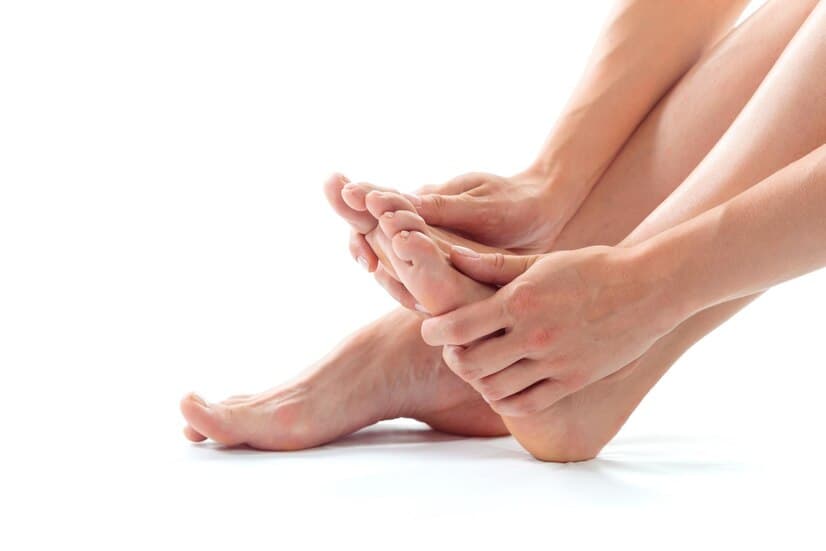Foot corns, medically termed helomas, represent a perplexing dermatological predicament characterized by the thickening of the epidermis in response to relentless pressure and friction.
While often perceived as minor inconveniences, foot corns wield the potential to inflict significant discomfort and complications if disregarded. Hence, delving into the intricate nuances of their etiology, categorization, and efficacious management becomes imperative.
Causes of Foot Corns
The genesis of foot corns ensues from a confluence of factors precipitating incessant pressure and friction on specific regions of the feet. Key contributors encompass:
- Footwear Faux Pas: Ill-fitting shoes, particularly those constricting or inadequately cushioned, exert undue pressure on the feet, instigating corn formation;
- Toe Tumult: Deformities such as hammertoes disrupt the foot’s anatomical alignment, fostering heightened friction and pressure points;
- Osseous Outcrops: Prominent bones protruding closer to the skin surface serve as focal points for pressure accumulation, predisposing individuals to corn development;
- Biomechanical Brouhaha: Deviations in gait mechanics or foot structure lead to disproportionate weight distribution, exacerbating pressure zones.
Identification and rectification of these underlying triggers are pivotal in preempting the recurrence of foot corns.
Types of Foot Corns
Foot corns manifest in divergent forms, each delineated by distinct morphological and locational attributes:
- Hard Corns: Characterized by localized patches of calloused, hardened skin, hard corns predominantly localized on toe tips or foot soles. They often exhibit a central core, termed the nucleus, penetrating inward;
- Soft Corns: Soft corns epitomize as whitish, rubbery lesions typically flourishing amidst interdigital spaces. Thriving in a milieu of moisture and warmth, soft corns perpetuate discomfort and irritation.
Deciphering the dichotomy between hard and soft corns elucidates tailored therapeutic modalities.
Complications and Risks
Neglecting foot corns or adopting erroneous self-management measures precipitates an array of potential complications, especially in susceptible cohorts. These encompass:
- Infectious Intrusion: Corns serve as portals for microbial invasion, precipitating localized infection characterized by erythema, edema, and purulent discharge;
- Ulcerative Unfurling: Prolonged pressure engenders ulcer formation, particularly alarming in individuals with compromised vascular perfusion or neuropathic sequelae;
- Diabetic Dilemma: Individuals grappling with diabetes confront heightened risks of diabetic foot sequelae, with foot corns serving as precursors to debilitating ulceration and limb compromise.
Timely intervention and meticulous foot hygiene constitute the bulwarks against deleterious outcomes.
Discover proactive measures and professional treatment options to combat fungal nail infections in New Zealand.
Prevention and Home Remedies
Mitigating foot corn incidence mandates a multifaceted approach targeting predisposing factors and adopting proactive remedial measures:
- Shoe Savvy: Embrace footwear ergonomics emphasizing adequate toe space and cushioning to obviate pressure hotspots;
- Padding Prudence: Employ cushioning pads or orthotic inserts to redistribute pressure and assuage friction;
- Vigilant Vigor: Regular foot inspection coupled with diligent moisturization and exfoliation forestalls corn formation.
Supplementary home remedies offer symptomatic relief and adjunctive management:
- Submerged Sojourn: Soak feet in tepid water to mollify calloused skin, followed by judicious abrasion using pumice stone or foot file;
- Interdigital Interlude: Employ silicone or foam wedges to alleviate interdigital pressure for soft corn mitigation;
- Pharmacological Prudence: Exercise caution with over-the-counter corn remedies, as their indiscriminate use may exacerbate cutaneous irritation or exacerbate pre-existing conditions.
When to Seek Podiatric Care
While self-management suffices for most instances, certain red flags warrant professional podiatric intervention:
- Persistent Pain: Unrelenting discomfort or exacerbating pain mandates podiatric evaluation for comprehensive assessment and tailored intervention;
- Infectious Indications: Erythema, warmth, or discharge heralding infectious complications necessitate prompt podiatric scrutiny;
- High-risk Profile: Individuals with diabetes, vascular insufficiency, or neuropathic predispositions necessitate vigilant podiatric surveillance to preempt catastrophic sequelae;
- Functional Impairment: Impediments in ambulation or daily activities precipitated by foot corns mandate podiatric intervention for comprehensive remediation;
- Podiatric expertise encompasses an array of therapeutic modalities ranging from conservative measures to surgical correction, tailored to individual needs and exigencies.
Conclusion
Foot corns epitomize a ubiquitous dermatological conundrum, rooted in the interplay of pressure and friction dynamics. By deciphering the intricacies of their pathogenesis, delineating variant phenotypes, and embracing proactive preventive and remedial strategies, individuals can navigate through the labyrinthine landscape of foot corns with aplomb.
Through judicious foot care practices, timely intervention, and collaborative podiatric endeavors, the specter of foot corn-related complications can be assuaged, fostering enduring foot health and vitality.


